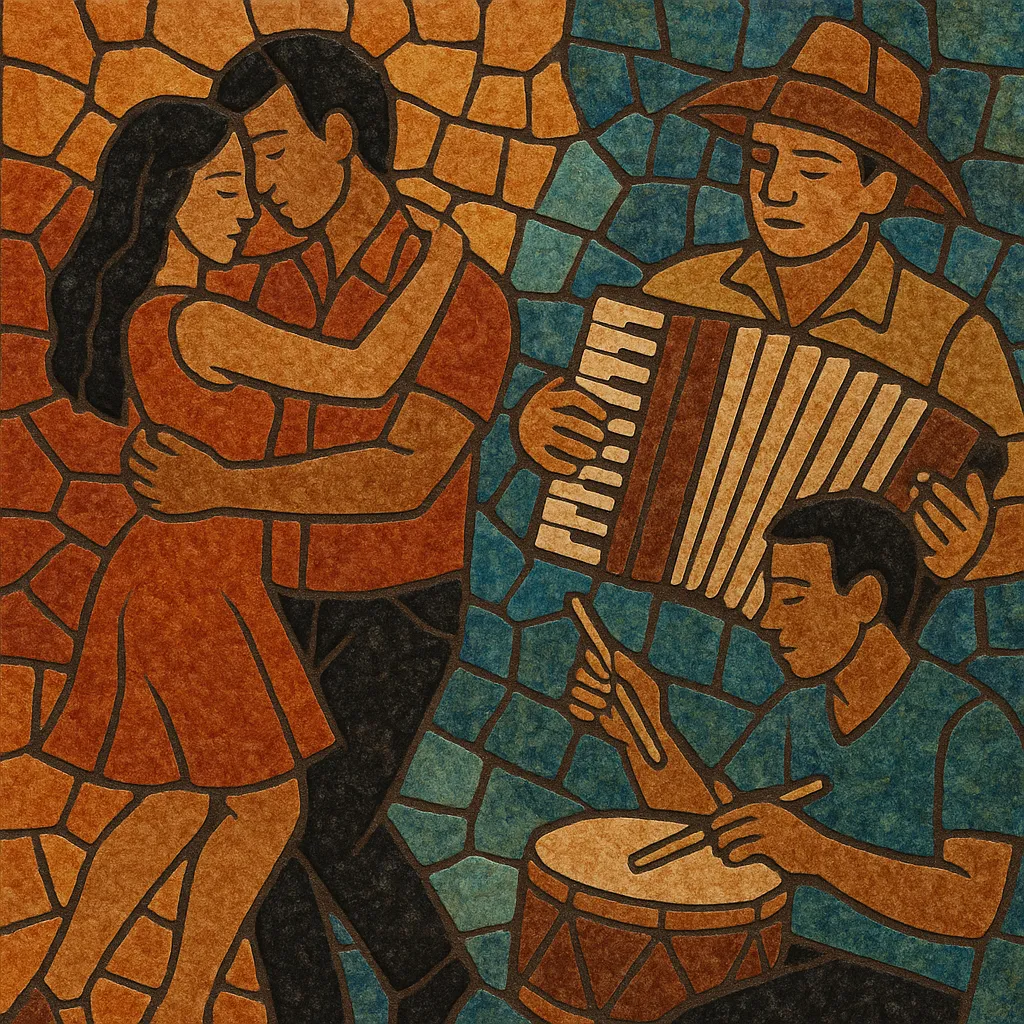Forró universitário is a modern, urban-friendly take on traditional Northeastern Brazilian forró that surged among university students in São Paulo in the late 1990s. It retains the core danceable rhythms (especially xote, baião, and arrasta-pé) and the classic trio of accordion (sanfona), zabumba, and triangle, but presents them with cleaner production, sing-along choruses, and pop-leaning song structures.
Compared to older pé-de-serra styles, forró universitário is often softer in timbre, more acoustic, and geared toward social dance classes and parties. Lyrically it blends romance, nostalgia, and everyday optimism, helping the genre travel well beyond Brazil’s Northeast and become a staple of youth culture and dance schools across the country.
Forró universitário emerged in São Paulo’s student circles as young musicians and dancers rediscovered Northeastern forró. They embraced the traditional rhythmic base—baião, xote, and arrasta-pé—while adopting accessible, radio-ready songwriting. The city’s dance schools and university parties became hubs, turning the style into a social movement as much as a musical one.
Bands such as Falamansa, Bicho de Pé, Rastapé, and Forróçacana brought forró universitário to national attention with melodic hooks, acoustic textures, and crowd-friendly choruses. This wave revived the accordion-led sound in Brazil’s Southeast and South, introduced countless students to forró partner-dancing, and boosted interest in the classics of Luiz Gonzaga and Dominguinhos.
While rooted in pé-de-serra’s instrumentation, forró universitário typically features polished production, occasional guitar/bass/drum additions, and pop/MPB harmonies. It coexisted with the more amplified, keyboard-driven forró eletrônico, but targeted different contexts: intimate shows, festivals, and dance classes versus large dance halls. The universitário wave also helped spark a new generation of traditionalist acts and scenes, reframing forró as a living, teachable, and urban cultural practice.
Today, forró universitário remains a gateway for dancers and listeners, sustaining robust festival circuits, workshops, and social dance communities in Brazil and abroad. Its emphasis on approachable melodies and partner-dance pedagogy continues to attract newcomers while keeping classic Northeastern rhythms at the center.


